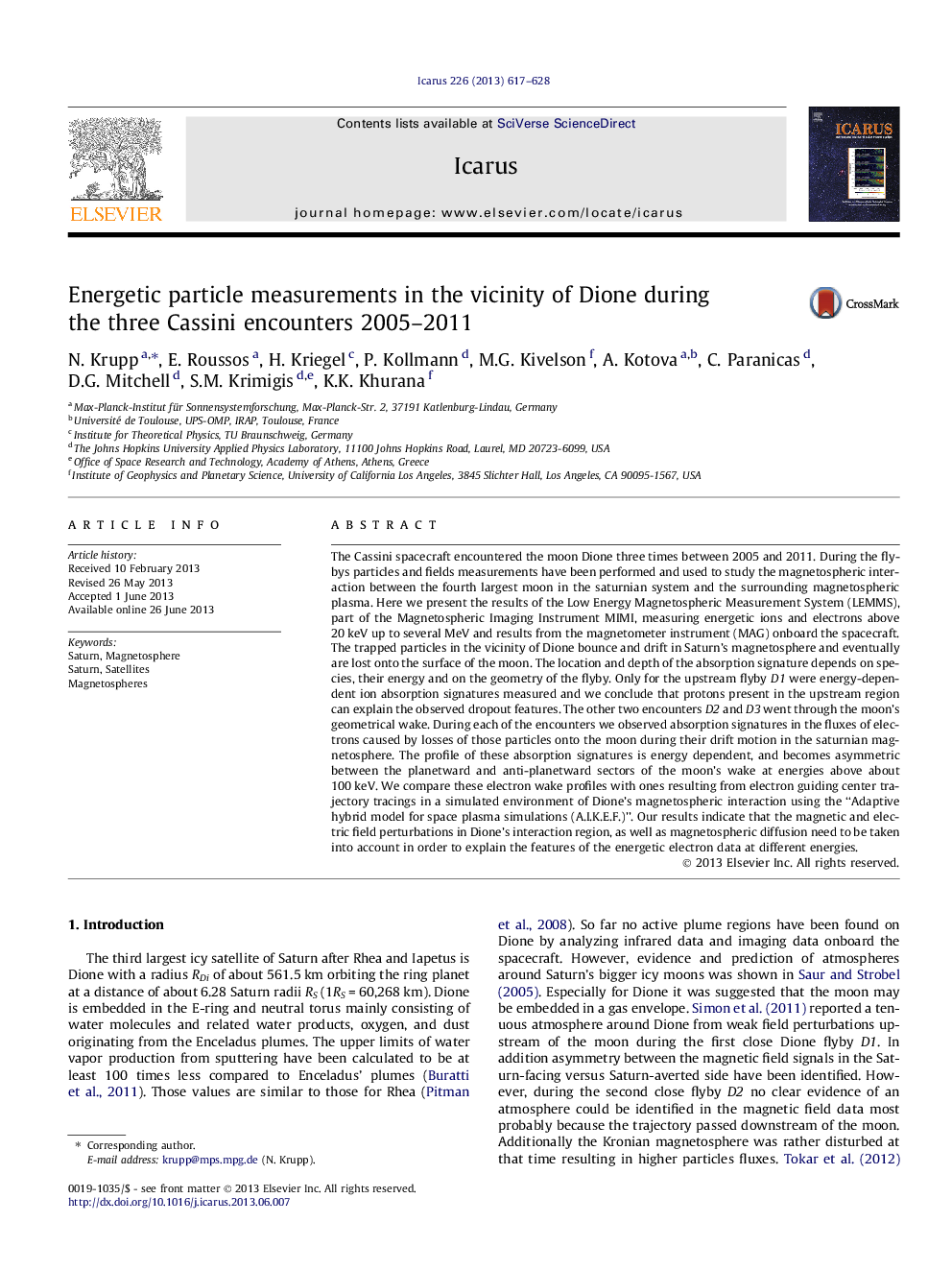| Article ID | Journal | Published Year | Pages | File Type |
|---|---|---|---|---|
| 10701328 | Icarus | 2013 | 12 Pages |
Abstract
The Cassini spacecraft encountered the moon Dione three times between 2005 and 2011. During the flybys particles and fields measurements have been performed and used to study the magnetospheric interaction between the fourth largest moon in the saturnian system and the surrounding magnetospheric plasma. Here we present the results of the Low Energy Magnetospheric Measurement System (LEMMS), part of the Magnetospheric Imaging Instrument MIMI, measuring energetic ions and electrons above 20Â keV up to several MeV and results from the magnetometer instrument (MAG) onboard the spacecraft. The trapped particles in the vicinity of Dione bounce and drift in Saturn's magnetosphere and eventually are lost onto the surface of the moon. The location and depth of the absorption signature depends on species, their energy and on the geometry of the flyby. Only for the upstream flyby D1 were energy-dependent ion absorption signatures measured and we conclude that protons present in the upstream region can explain the observed dropout features. The other two encounters D2 and D3 went through the moon's geometrical wake. During each of the encounters we observed absorption signatures in the fluxes of electrons caused by losses of those particles onto the moon during their drift motion in the saturnian magnetosphere. The profile of these absorption signatures is energy dependent, and becomes asymmetric between the planetward and anti-planetward sectors of the moon's wake at energies above about 100Â keV. We compare these electron wake profiles with ones resulting from electron guiding center trajectory tracings in a simulated environment of Dione's magnetospheric interaction using the “Adaptive hybrid model for space plasma simulations (A.I.K.E.F.)”. Our results indicate that the magnetic and electric field perturbations in Dione's interaction region, as well as magnetospheric diffusion need to be taken into account in order to explain the features of the energetic electron data at different energies.
Related Topics
Physical Sciences and Engineering
Earth and Planetary Sciences
Space and Planetary Science
Authors
N. Krupp, E. Roussos, H. Kriegel, P. Kollmann, M.G. Kivelson, A. Kotova, C. Paranicas, D.G. Mitchell, S.M. Krimigis, K.K. Khurana,
